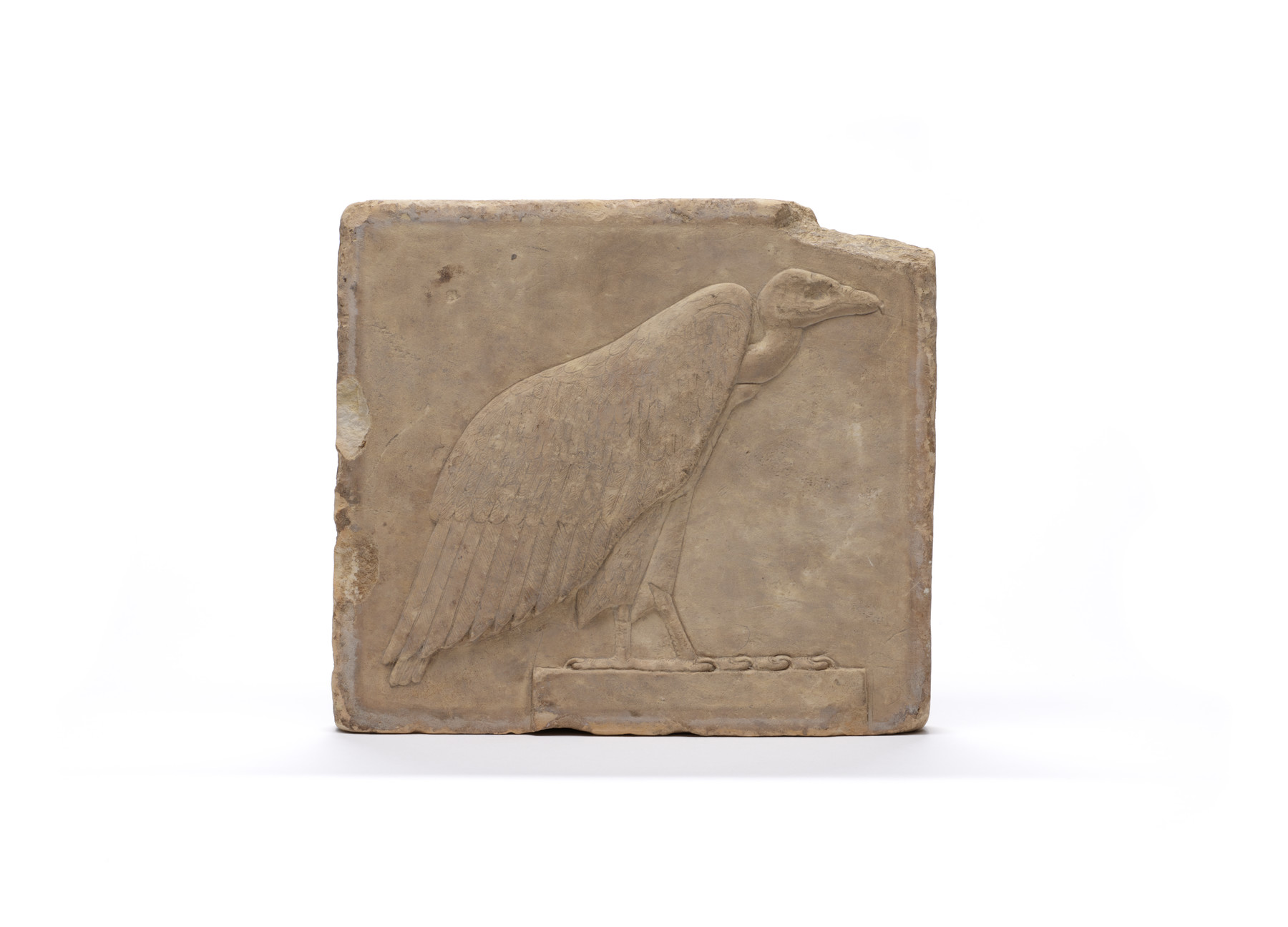Sculptor's Model of a Vulture Hieroglyph
(Ancient Egypt and Nubia )
Sculptor's models were used in the workshops of craftsmen for training and demonstration purposes. This two-dimensional model, executed in raised relief, displays a vulture. The image represents the hieroglyphic script sign "aleph" (which does not exist in the English alphabet), and was a model for large-scale temple inscriptions.
Provenance
Provenance (from the French provenir, 'to come from/forth') is the chronology of the ownership, custody, or location of a historical object. Learn more about provenance at the Walters.
S. Pozzi sale, Galerie Georges Petit, Paris, 25-27 June 1919, lot. 297; Henry Walters, Baltimore [date and mode of acquisition unknown]; Walters Art Museum, 1931, by bequest.
Conservation
| Date | Description | Narrative |
|---|---|---|
| 8/24/1972 | Treatment | cleaned |
| 4/17/1995 | Loan Consideration | examined for loan |
| 8/6/1998 | Examination | survey |
Geographies
Egypt (Place of Origin)
Measurements
5 1/2 x 6 5/16 x 7/8 in. (14 x 16 x 2.3 cm);
framed: 7 7/8 x 9 7/16 x 3 1/8 in. (20 x 24 x 8 cm)
Credit Line
Acquired by Henry Walters
Location in Museum
Not on view
Accession Number
In libraries, galleries, museums, and archives, an accession number is a unique identifier assigned to each object in the collection.
In libraries, galleries, museums, and archives, an accession number is a unique identifier assigned to each object in the collection.
22.36






